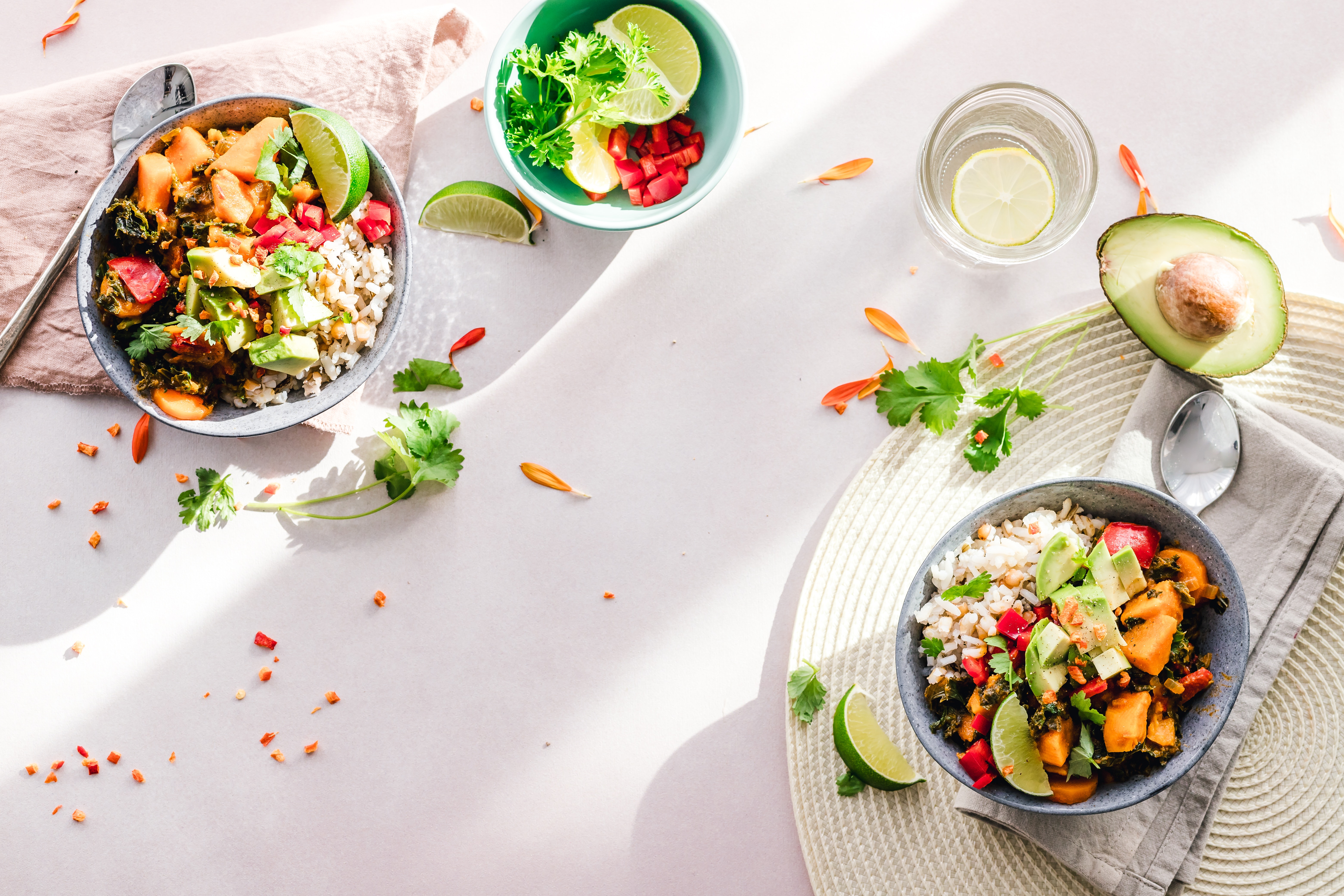I was 10-years-old when I watched my dad get into an argument with the server at McDonald’s. Was it because they improperly prepared the food? Because he forgot to give us part of our order?
No, it was because the employee didn’t want to fill the order for his vegan daughter: a Big Mac with no meat, no cheese, and no sauce.
I got my vegan Big Mac that day, and now many years later, I still adhere to a vegan diet. That’s why I can’t wait to share my vegan meals guide for beginners with you.
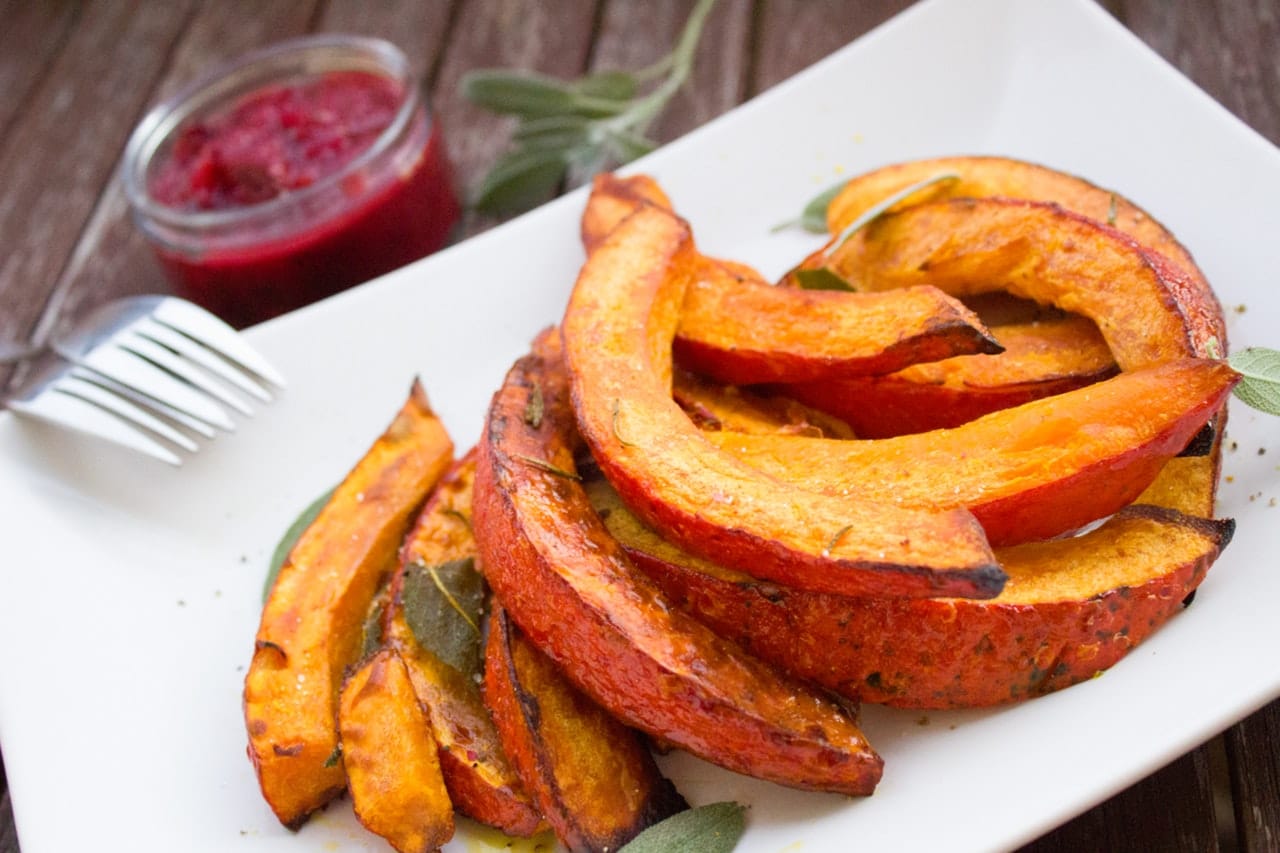
Luckily, things have changed since that day at McDonald’s, and you can now order vegan-friendly burgers at some fast-food chains.
In fact, veganism is considered a worldwide phenomenon with a 600 percent increase in people switching to the diet from 2014 to 2017.
Going to restaurants back then was challenging, and I often ended up with bread, pickle, and onion sandwiches, but now it’s possible to get a vegan meal almost anyplace.
But when you want to cook at home, you need a vegan meals guide for beginners.
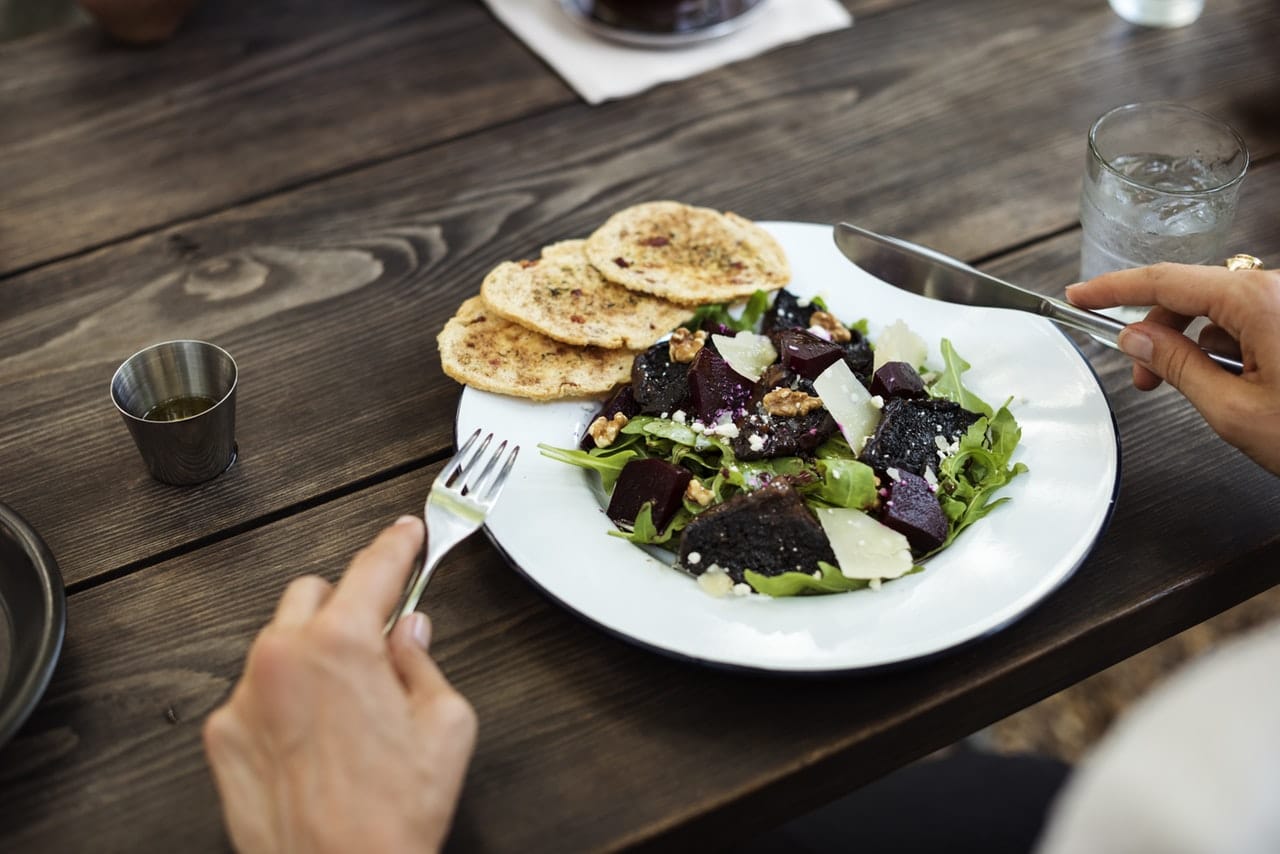
Vegan Meals Guide for Beginners: What Is a Vegan Diet?
In 1944, a group of vegetarians decided that they wanted to go one step further and they broke away from the Leicester Vegetarian Society to form the Vegan Society.
They got their name by using the first and last letters of the word vegetarian. The Society defines its lifestyle as:
“A way of living which seeks to exclude as far as is possible and practicable, all forms of exploitation of, and cruelty to, animals for food, clothing or any other purpose.”
So how does that relate to a vegan meals guide for beginners?
By eating foods that are good for the body, but don’t use animals or animal by-products in them. In other words, when eating a vegan diet, you sustain your own body without harming another’s.
Many people associate vegetarianism as the diet that helps save animals from a cruel death, but vegans want you to know that the companies that produce dairy and eggs also facilitate violence against our animal friends.
What Is a Vegan Lifestyle?
When you live a vegan lifestyle, you commit to living ethically. Your lifestyle does no harm to innocent animals, and as an added bonus, you get numerous health benefits.
But the decision is a personal one.
As a consumer, you speak with your wallet, and vegans speak out by not consuming the products that harm animals and our environment. It is a way of living that promotes your personal morals and ethics.
If you’re certain that this is a lifestyle you want to live, let’s talk about the types of diets most vegans practice. Then we’ll get into the specifics of the vegan meals guide for beginners.
Many people start eating a vegan diet because of health concerns.
The Academy of Nutrition and Dietetics recognizes that a well-planned vegan diet is healthful, nutritionally adequate, and may prevent or help treat certain diseases.
Vegan Meals Guide for Beginners: 7 Types of Vegan Diets
Not all vegans eat the same diet.
In fact, today you would never catch me going to McDonald’s to eat the burger my dad fought so hard for when I was 10.
When reading through this vegan meals guide for beginners and create your own plan, you can choose from the following types of vegan diets.

Whole foods

Raw foods

80/10/10

Starch Solution

Raw Till 4

Thrive

Junk food vegan

1. Whole foods
When you eat a whole-food vegan diet, you rely on whole plant foods such as vegetables, fruit, legumes (beans), nuts, seeds, and whole grains.
You prepare your foods cooked or raw, and processed foods rarely — or ideally never — appear on your plate.

2. Raw foods
Some vegans eat raw foods as the mainstay of their diet. They eat raw vegetables, nut, seeds, fruits, and foods that are cooked below 118 degrees.
One study that followed the eating habits of 17 raw foodists shows that 85 percent of their diet is uncooked food.

3. 80/10/10
Another vegan diet to consider is the 80/10/10. This diet is also raw-food based, but it limits fat from plants such as nuts and avocados.
Instead, it relies on soft greens and raw fruits for much of its nutrition.
People who practice this diet strive to get 80 percent of their calories from carbohydrates (mostly from fruit), 10 percent from protein, and 10 percent from plant fats.
A lot of people believe that veganism is dangerous for children. That is false. In fact, the American Dietetic Association says that vegan diets are healthy for any life stage.

4. Starch solution
This vegan diet is similar to the 80/10/10, but instead of getting most of its carbohydrates from fruit, it uses potatoes, rice, and corn.

5. Raw till 4
For those who like the idea of a raw food diet but want some cooked meals, the raw till 4 diet allows both.
People who adhere to this diet eat raw foods until 4 pm and then have the option of eating a cooked, vegan meal for dinner.

6. Thrive
Brandan Brazier, a professional athlete, designed the thrive diet.
It doesn’t limit portion sizes or count calories, but followers are advised to eat several small meals daily to keep their blood sugar levels and energy consistent throughout the day.
People who use this plan only eat raw foods.

7. Junk food vegan
Just because someone is a vegan, that doesn’t mean they eat healthy.
For example, my ten-year-old self thought I was doing well by going to McDonald’s and ordering a vegan burger, but that wasn’t the case.
Someone who consumes a junk food vegan diet eats a lot of fake meats and cheeses, processed “health” foods, and vegan desserts.
This type of diet lacks in nutrition because whole foods aren’t a large part of it.
The Food and Agriculture Organization of the United Unions predicts that the world meat production will double by 2050.
And all those animals, including those kept for dairy and eggs, need food and water to survive.
For instance, to produce one pound of beef, it takes 1,799 gallons of water.
But cutting the consumption of animal products in half would reduce the U.S.’s dietary water requirements by 37 percent
Health Benefits of a Vegan Diet
There are many health benefits to a vegan diet. And when creating this vegan meals guide for beginners, I couldn’t help but think about them as I listed the various nutritious foods in the recipes.
Here is a video that will show you just some of the health benefits you will gain by transitioning to a vegan lifestyle.
Vegan Meals Guide for Beginners: Mainstay Foods
By now, you’re probably wondering what types of foods I will include in this vegan meals guide for beginners.
Luckily, the diet consists of some pretty exciting foods that you can use to make a lot of different recipes.
You will use plant-based replacements for meats, dairy, and cheeses. Here’s a quick rundown of some of the staple foods in a vegan diet.
One of the biggest myths about vegans is that they are destroying the rainforest.
People believe this because of deforestation related to soya farming, a popular ingredient in vegan products.
That is false.
Tofu, tempeh, and seitan

Most people know about tofu — a food made from condensed soy milk and formed into blocks. You can buy tofu in soft, medium, or hard varieties and it tends to take on the flavor of the spices you use.
Many vegans consider this a staple in their pantry, but because of concerns about genetically modified foods (GMOs), some vegans won’t eat tofu anymore.
Tempeh is a great alternative because it’s fermented, making it healthier and easier to digest.
It contains fiber and other healthy nutrients that make it a great choice for meat and protein supplementation. It comes shaped in patties, which can be thrown into stir-fries or on sandwiches.
Seitan is made from wheat, and its texture makes it the perfect meat substitute for some meals. You can grill it, roast it, or use it in a stir-fry.
All three of these are great sources of protein and are versatile enough to use them in many different recipes.
Vegans are thinner and have a lower body mass index (BMI) than people who don’t follow the diet.
Because vegans typically follow a healthier lifestyle, some people believe that’s the reason for their ability to lose and keep off the weight.
But other studies say it’s the diet.
Legumes
Most vegans eat a lot of legumes because they are so versatile.
Legumes are beans, peas, and lentils, and have a lot of nutritional value.
Nuts and nut butter
Nuts and the butter made from them are rich sources of iron, magnesium, selenium, vitamin E, and fiber.
Try to eat raw, unblanched, or unroasted nuts to get the most antioxidant value from them.
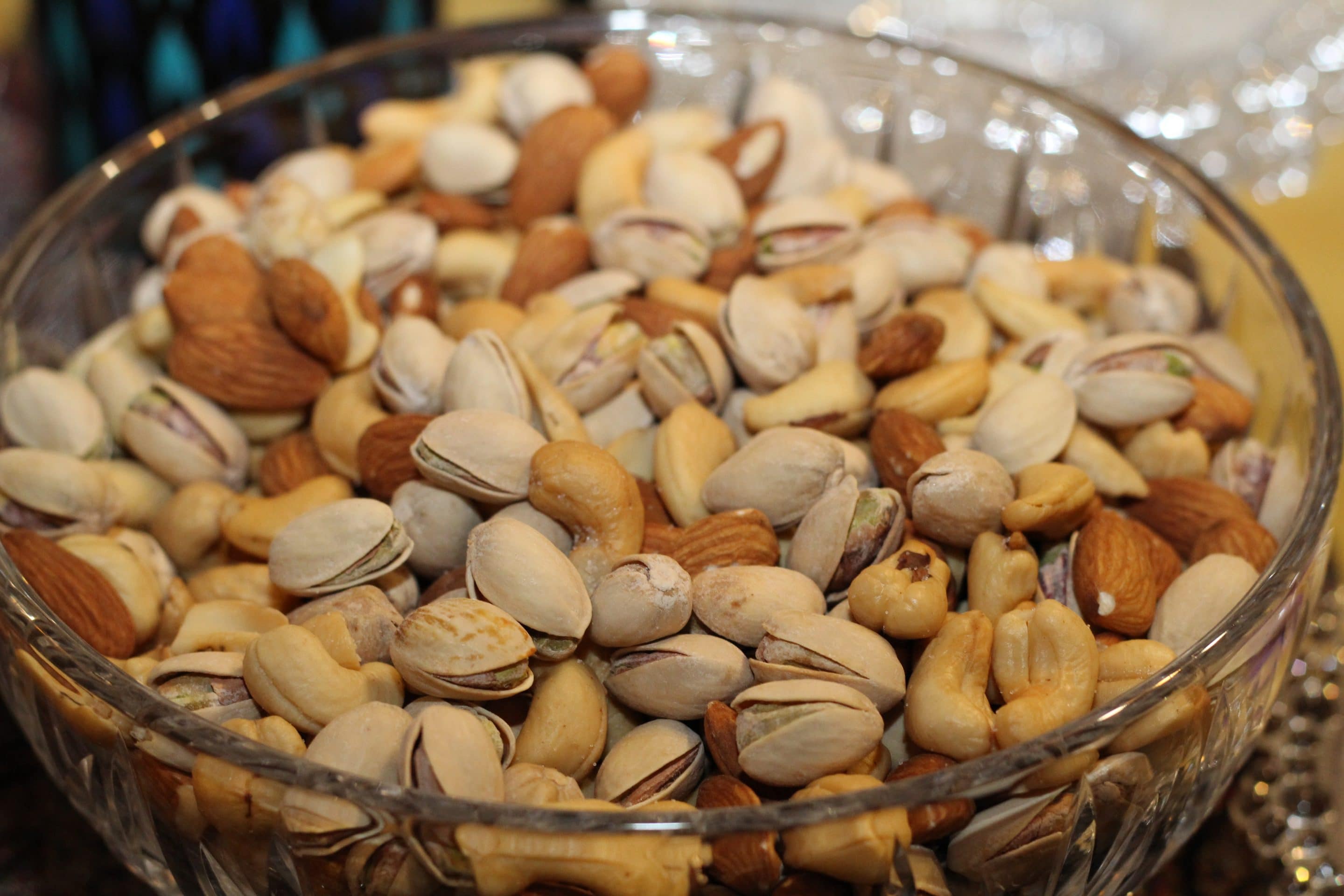
Seeds
Seeds should be a large part of your vegan meals guide for beginners plan because they are rich in protein and beneficial omega-3 fatty acids.
The most nutritional seeds are hemp, flaxseeds, and chia seeds.
Plant milks and yogurts
Vegans need to take steps to get their recommended dietary calcium intake, and plant-based milk and yogurts can help.
Be sure to buy calcium-fortified brands that also include vitamins B12 and D.
Nutritional yeast
This powdery substance is full of protein and gives vegan dishes that sought-after “cheesy” flavor.
You can use your imagination when it comes to nutritional yeast and add it to all sorts of recipes.
The amount of fiber consumed in a vegan diet may also explain why vegans have lower blood sugar levels, higher insulin sensitivity, and a 78 percent lower risk of developing type 2 diabetes than people who don’t adhere to a vegan diet.
Fermented and sprouted plant foods
Sprouted and fermented foods such as tempeh, miso, Ezekiel bread and breads like it, kombucha, kimchi, natto, and sauerkraut contain probiotics which help keep your gut healthy.
They also contain vitamin K2 and can help improve your body’s ability to better absorb minerals.
Whole grains, cereals, ancient grains
As a vegan, you can use foods like amaranth, quinoa, spelt, and teff as sources of fiber, iron, B-vitamins, complex carbohydrates, and minerals.
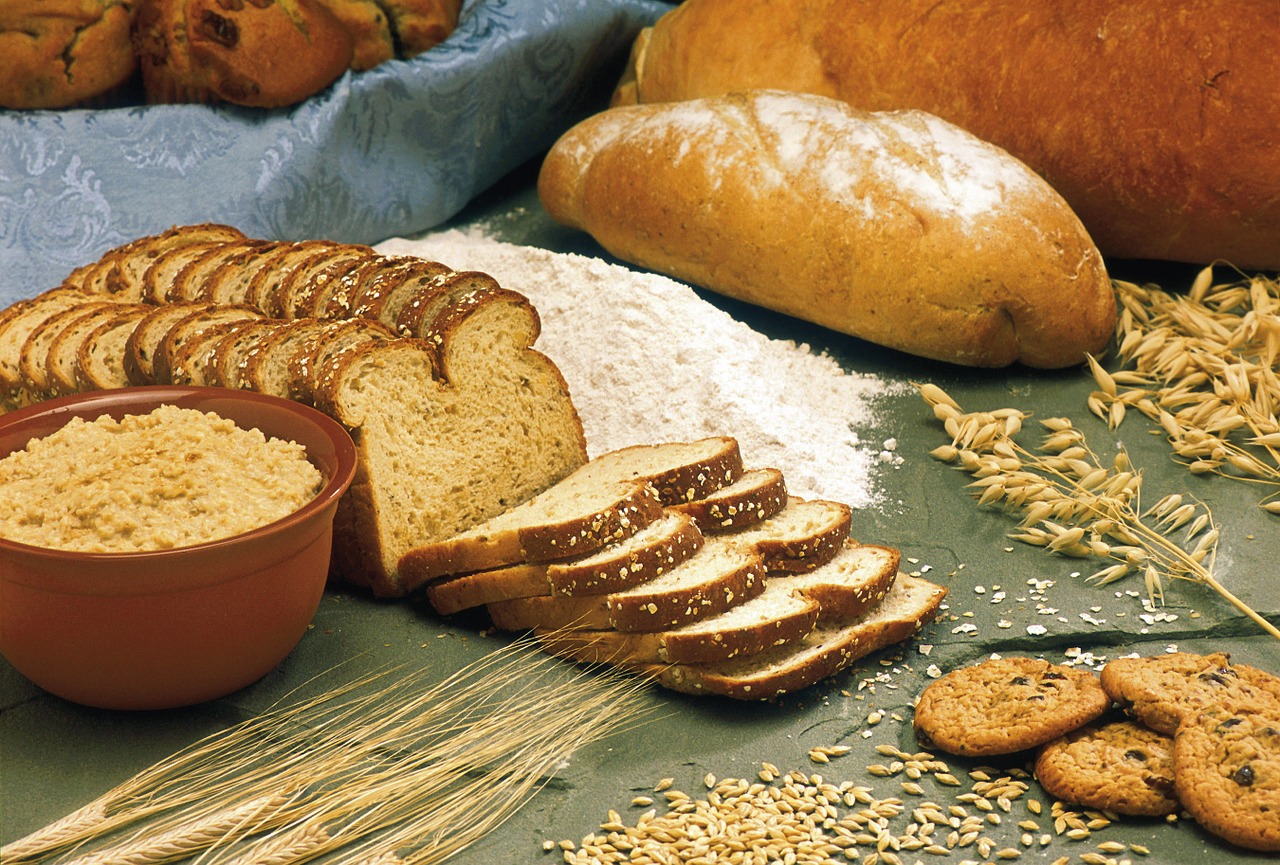
Algae
Some algae’s are excellent sources of iodine, while spirulina and chlorella are sources of complete protein.
Vegetables and fruits
It goes without saying that vegetables make up a huge portion of the recipes in this vegan meals guide for beginners.
Whether you eat them raw, cooked, or juiced, you should strive to include as many of them in your daily diet as possible.
Vegan Meals Guide for Beginners: Foods Vegans Avoid
Now that we’ve talked about the foods that are commonplace in the vegan diet let’s talk about which foods you want to avoid.
Vegans don’t eat any animal foods or foods that contain ingredients derived from them.
Meat and poultry
Vegans don’t eat any animals including beef, lamb, wild meat, chicken, turkey, goose, duck, quail, pork, veal, organ meats, or horse meat.
Fish and seafood
You won’t find any type of seafood in this vegan meals guide for beginners, as most vegan diets don’t include foods that come from any animals, even those that live in the water.
That includes fish, shellfish, oysters, lobster, crab, mussels, scallops, anchovies, shrimp, or squid.
Dairy
Because dairy comes from animals, vegans don’t eat it. This includes milk, butter, cream, ice cream, yogurt, and cheese.
Vegan diets are also known for increasing heart health.
Some studies show that those who adhere to a diet have a 75 percent lower risk of developing high blood pressure and a 42 percent lower risk of dying from heart disease and a 42 percent lower risk of dying from heart disease.
This may be because vegan diets are more effective at reducing blood sugar, LDL, and total cholesterol.
Eggs
Because eggs come from chickens, ostriches, fish, or quail, vegans don’t include them in their diet.
Bee products
Bee pollen, royal jelly, and honey comes from bees, so vegans don’t eat them.
Animal-based ingredients
Many foods contain animal-based ingredients that vegans don’t eat.
Some of them are lactose, egg white albumen, casein, whey, carmine, cochineal, isinglass, shellac, L-cysteine, animal-derived vitamin D3, and fish-derived omega-3 fatty acids.
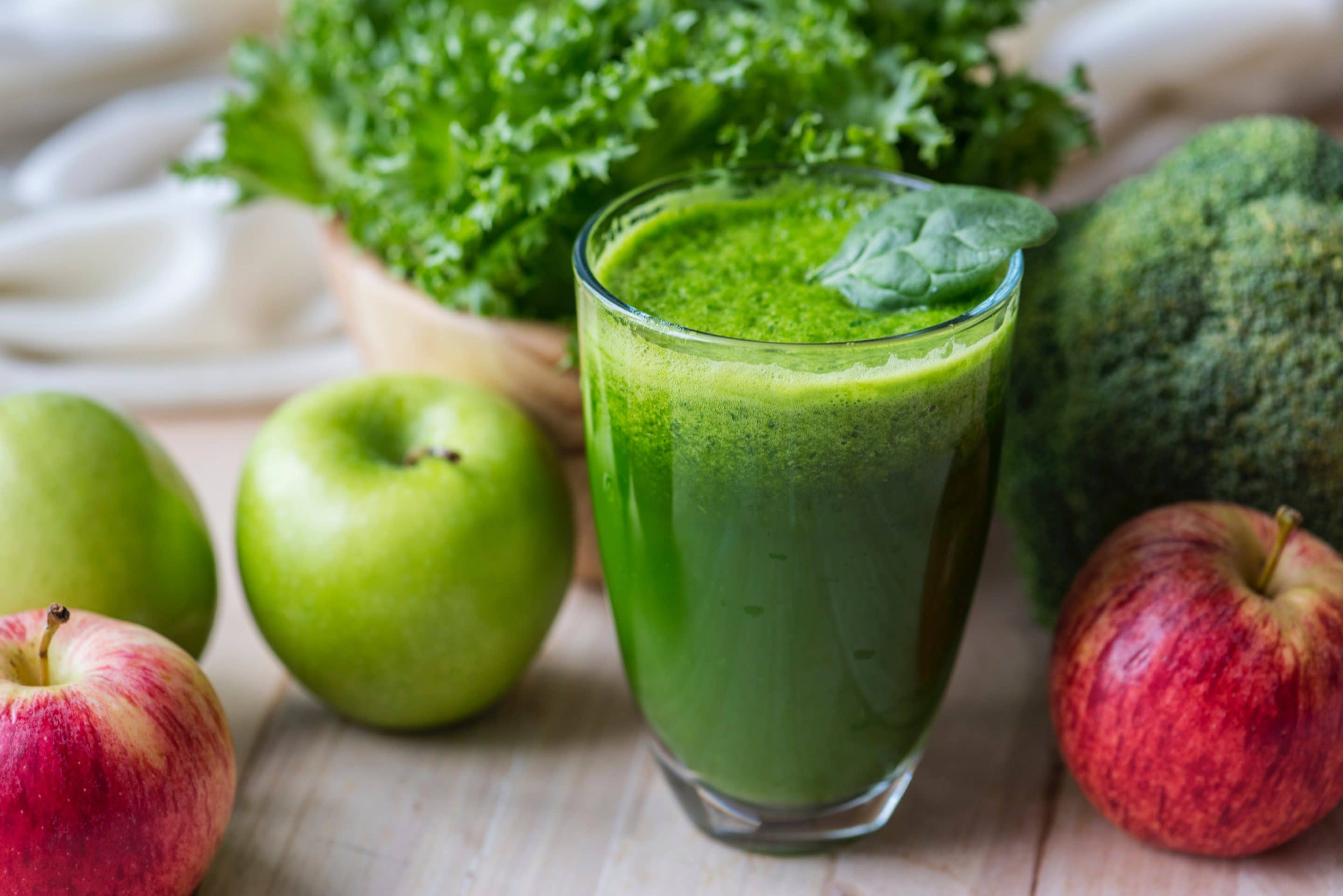
Caution: Possible Nutritional Deficiencies
When putting together your meal plan with the help of this vegan meals guide for beginners, you have to keep in mind that vegans run the risk of some nutritional deficiencies.
It’s important to eat the right foods to eliminate this risk.
Here are some possible deficiencies of a vegan diet and how to make up for them.
Vitamins/Minerals | Description |
|---|---|
Vitamin B12 | Make up for this by eating plenty of fortified foods enriched with vitamin B12 |
Vitamin D | Eat vitamin D enriched foods to make up for a deficiency |
Omega-3s | Use plant-based omega-3 supplements |
Iodine | Eat seaweed or iodized salt |
Iron | Eat fermented or sprouted foods, use cast iron pans, and combine vitamin C with meals to help increase iron absorption |
Calcium | Eat calcium-fortified foods |
Zinc | Eat sprouted or fermented foods |
Supplementation
Sometimes it’s necessary to consider supplementation when incorporating the ideas from this vegan meals guide for beginners into your lifestyle.
Here are some supplements you should consider:
How to Make Family-Friendly Vegan Meals
Now it’s time to talk about the actual meals in our vegan meals guide for beginners.
I’ve included some of my own recipes below as well as some that get great reviews on other websites. I’ve included at least two recipes for each category.
Remember, vegan cooking is all about imagination. You’re not limited to stir-fries every day of the week!
The Cancer Journal for Clinicians estimates that more than 1.7 million people will develop cancer in 2019.
One way to cut your risk of cancer is by starting on a vegan diet. One study shows that vegans are 15 percent less likely to develop cancer than non-vegans.
Vegan Breakfast Recipes
Eating a good breakfast is a great way to start the day.
Here are a couple of recipes that will give you the fuel you need to get going.

Avocado toast
Toast two pieces of sprouted bread to your desired level.
Spread vegan mayonnaise on them and top with sliced avocado.
Oatmeal bowl
Cook gluten-free oats according to the directions on the package.
Meanwhile, put a scoop of almond butter, a handful of shredded coconut, goji berries, chia seeds, and fresh fruit in the bowl.
When cooked, pour the oats into the bowl. Stir for at least two minutes before eating.
Tofu eggs
If you’re craving a traditional breakfast, use this recipe.
- Start by mixing 1 teaspoon nutritional yeast, 1/4 teaspoon of turmeric, paprika, and cumin, a pinch of salt, a few grinds of black pepper, and a tablespoon of water.
- Next, sauté one glove of garlic and a scallion about two minutes. Crumple half a package of firm tofu into the mixture and stir until the tofu is well coated.
- Add 1 tablespoon of fresh parsley and cook for 1 to 2 minutes more. You can add sprouted toast, an avocado, or sliced tomatoes as a side.
Vegan Lunch Recipes
Sometimes you need to eat lunch on the go while at other times you can take the time to cook a meal at home.
I’ve included both types of recipes below.
Seitan sauerkraut sandwich
If you need to brown bag it, this sandwich will fill you up and satisfy your craving for good food.
- Start by draining 1/3 cup of sauerkraut. (If you haven’t started making your own yet, here is a great recipe!)
- Now, place 2/3 cup of onion slivers and 1 cup of button mushrooms in a pan with a little oil. Sauté until the onions are transparent.
- Take them out and set aside. Add seitan slices to the pan and cook until both sides appear slightly browned.
- Meanwhile, toast some sprouted bread.
- When the bread is toasted, spread one side with stone-ground mustard and the other side with vegan horseradish. Then stack the seitan, onions, and mushrooms, and the drained horseradish.
Another myth about veganism is that it isn’t healthy because we take supplements.
This is false.
In fact, any diet will have deficiencies. Someone who eats meat and dairy may still be required to take iron, calcium, and other supplements; it is not solely vegans who supplement their diets.
Strawberry turmeric salad
If you plan to eat a raw vegan diet, this recipe is one of the best you’ll find in this vegan meals guide for beginners or any other collection of vegan recipes.
Start by adding the following ingredients to your blender:
Blend thoroughly and then let sit for five minutes. Blend again to rehydrate and then put in the refrigerator for 30 minutes.
Next, put the following into a bowl:
Pour the salad dressing over the salad and enjoy!
Vegan Dinner Recipes
You probably cook most of your dinner time meals at home with friends and family. Here are some great recipes for times when you want a simple meal or a more elaborate one.
Vegan alfredo pasta
Sometimes you just want a warm bowl of cheesy pasta — without the animal by-products. That’s possible when you use a recipe like this.
- Start by soaking 1 cup of cashews in water overnight. The next day, sauté 1/2 an onion and 2 cloves of garlic over medium heat in a large saucepan. Cook it until it’s browned, then add it to a blender.
- Next, drain the cashews and add them to the blender with 1 cup unsweetened almond milk, 1/4 cup of vegan cheese (optional), and a pinch of salt. Blend until the mixture is smooth and creamy.
- If you are using noodles (you can also use spiralized zucchini), put them in boiling water and cook according to the package directions.
- Add 1/2 cup of mushrooms and 1 cup of spinach to the saucepan and cook until softened. Add the noodles or zucchini and the sauce from the blender and heat.
Two observational studies show that eating a vegan diet reduces the risk of Alzheimer’s disease.
In the first study, researchers pointed out that diets high in grains, vegetables, fruits contribute to a lower risk of the disease.
The second study shows that meat eaters are twice as likely to develop dementia as non-meat eaters.
Fajita quinoa bowls
For a quick and easy dinner loaded with protein, try this easy recipe.
- Place 1 red onion, halved and sliced thinly, 1 orange or yellow bell pepper, seeded, cored, and sliced, 1 red bell pepper, and 2 ears of corn on a baking sheet.
- Pour 1 tablespoon of olive oil over them and then sprinkle 1 1/2 teaspoons of vegan-friendly taco seasoning over it. Roast for 15 minutes in an oven set to 425 degrees until tender and browned.
- In a saucepan, mix 2 cups of canned or prepared fresh black beans and 1/4 teaspoon of cumin.
- In your serving bowls, make beds of quinoa and then top with the roasted vegetables and bean mixture. Add guacamole, salsa, and lime wedges to give it that extra kick.
A vegan diet is anti-inflammatory, and the result is that it often leads to reduced
symptoms of arthritis.
One study shows the plant-based diet significantly improved participant’s functional status.
Stuffed peppers in tomato sauce
My son wouldn’t be happy if he knew I was handing out this recipe because he’s very protective of it. It’s quick, simple, and trust me; it makes a lasting impression.
- I make a full pan of these because they’re great as leftovers, too.
- Start by broiling at least 10 poblano peppers until the skins are black. Take them out of the oven and let them cool.
- Then peel off the charred skins and wash them inside and out. Be sure to wash away the seeds.
- Sauté 1 1/2 onions, 5 cloves of garlic, 1 pint of cherry tomatoes, 1/2 cup of fresh cilantro, and 1/4 cup of pomegranate seeds. Once translucent and soft, set aside.
- Meanwhile, cook a package of quinoa according to the directions. Once it’s cooked, add the sautéed mixture to it and stir well.
- In a saucepan, make a tomato sauce using chopped tomatoes, onions, garlic, and fresh basil and oregano. You can use canned sauce if you don’t want to make your own.
- Put the sauce in the bottom of a large baking dish.
- Add the peppers to the dish, and then stuff each one with the quinoa mixture. Place the pan in the oven and bake for 35 to 45 minutes.
Vegan Snack Recipes
Sometimes you don’t have time to cook, but that doesn’t mean you should grab a bag of processed food just to fill your stomach.
Make these snacks and keep them on hand for times when you’re hungry and in a hurry.
Turmeric snack bites
If you want a delicious chocolaty snack with a nutritional punch, this recipe can’t be beaten.
Place the following in a high-powered blender or a food processor and blend until it sticks together:
Once mixed, place the entire mixture in a bowl and then use a spoon to roll it into 10 balls. You can store them in the refrigerator for one week.
Sun-dried tomato hummus
Hummus with carrot sticks is a staple in our house, and because it’s so easy to make, I often use it as a go-to snack.
Add the following to a blender:
Blend until very smooth and serve with crackers, carrot sticks, or other raw veggies.
Vegan Dessert Recipes
What’s a vegan meal's guide for beginners without a couple of dessert recipes?
Here are two that I think you’ll like.
White chocolate truffles
Who doesn’t love a soft, dreamy white chocolate truffle? This recipe makes it easy to make up a batch of these vegan desserts in a snap.
- Place 1/2 cup of raw macadamia nuts and 1 1/2 cups of desiccated unsweetened coconut in a food processor and blend until smooth and creamy.
- Add 1/4 cup of melted cocoa butter, 2 to 4 tablespoons of powdered sugar, 1/2 teaspoon of vanilla extract, and a pinch of sea salt. Blend again.
- Transfer the mixture to a bowl and place in the refrigerator for an hour or until it’s firm to the touch.
- Meanwhile, place 3/4 cup of desiccated coconut on a flat plate. Using a cookie scoop, scoop out rounded tablespoon amounts of the mixture and roll into balls.
- Roll them in the shredded coconut and set them on a plate. Once you finish rolling the balls, put them back in the refrigerator for 5 to 10 minutes until set.
- They will stay good in the fridge for a week or in the freezer for one month. They are best when served at room temperature.
A vegan diet that consists of foods like those found in this vegan meals guide for beginners reduces your risk of poor kidney function.
Researchers looked at people with diabetes and determined that when eating a vegan diet, their renal function improved.
Banana ice cream
Here’s another recipe that I make for my family all the time.
- Put 3 frozen, chopped up bananas, 1/4 cup of frozen cranberries (other berries will work, too), 1 tablespoon of vegan cocoa powder, and 1/4 cup of chopped walnuts in a blender and blend until smooth.
- Be careful not to blend too much, or it will thaw out the bananas. Serve immediately to see happy faces all around.

Did Our Vegan Meals Guide for Beginners Help Get You Started?
Becoming a vegan is a life-changing step, and it’s wise to get prepared before embarking on this wonderful adventure
I hope my vegan meals guide for beginners will help you make the right choice for you and get you on your way.
What about you? Have you already begun a vegan lifestyle or is this vegan meals guide for beginners your first introduction to this way of life?
We would love to hear about your adventure in the comments below!

